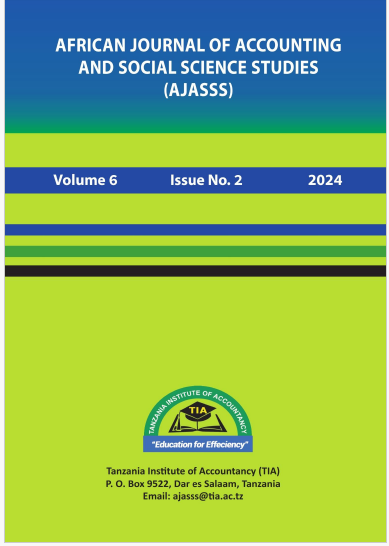Determinants of Employees’ Retention in Tanzanian Local Government Authorities: Insights from Njombe District Council
DOI:
https://doi.org/10.64717/ajass.v6i2.207Keywords:
Employees’ Retention, Employees’ Turnover, Determinants of employees’ retention, Self-initiated TransferAbstract
This paper adopted equity theory to investigate the factors of employee retention
in Local Government Authorities (LGAs) with insights from Njombe District
Council by using a cross-sectional research design. The study employed a mixed
methods approach whereby qualitative was the major approach supported partly
with quantitative approach. Data were collected from 60 randomly selected
respondents and from 8 key informants. The study used survey and interview
methods with questionnaires and interview guides as data collection tools
respectively. The descriptive statistics was used to analyse quantitative data
while the qualitative data were analysed by content analysis. The findings posit
that, basic salary/pay rate, fringe benefits, training and development
opportunities, existence of chances for career growth and development and
adequacy of working facilities and resources are the leading factors in LGAs
employees’ retention. Consequently, the study achieved its objectives and
determinants for employees’ retention are well identified. The study therefore
recommends that there should be harmonisation of salary and benefit schemes
across the public sector in Tanzania as a means to mitigate the transfer of LGAs
employees to other public sectors.
Downloads
Metrics
Downloads
Published
How to Cite
Issue
Section
License
Copyright (c) 2025 African Journal of Accounting and Social Science Studies (AJASSS)

This work is licensed under a Creative Commons Attribution 4.0 International License.




